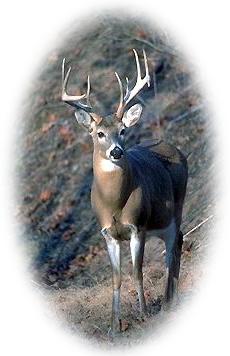The Size and Age of a Bull Can Be Determined by the Sound of His Voice and its Volume.
This is not true at all. A mature 4 or 5 pointer can scream as loud or louder as an elk with the largest rack. Or vice versa, the elk with the large rack may be loud. This is just not a good way to determine anything about the elk other than he has a loud voice. The purpose of bugling in male elk is a sort of male "advertisement", and harem bulls will often try to outbugle each other. This really intensifies during the rut.
Hot Weather Can Delay Elk Breeding Patterns
This is simply not true, but an early cool season can help speed up the rut. What seems to impact the arrival of the rut more than anything is the amount of daylight in each day. Hormonal changes will start ocurring as soon as the days begin getting shorter. For weeks during the rut, a harem bull has a full time job of keeping his group intact. He is constantly rounding up wandering cows and drives away would be rival bulls.
You Can Tell a Deer's Age by it's Antlers
Antlers tell you very little about a deer's age. The size of deer antlers varies greatly with genetics, physical condition as well as the time of the year. The most accurate way to tell the age of a deer is to count the growth rings on its teeth.
Rattling Only Works in Texas
Not true! Rattling antlers may attract deer anywhere because bucks are always competing for does. Rattling does work best in the open areas because the sounds do not travel very far in heavily wooded areas.
Spooked Deer Will Run for Miles
Actually, deer will rarely run more than a few hundred feet and are reluctant to leave their home range. When they do venture out of their home area, they are very vulnerable to hunters and seldom live to return home.
If You See Fawns, The Herd is in Bad Shape
This is very untrue. When food is plentiful and the weather conditions are mild, many of the female fawns become pregnant, but don't give birth until July, which is one or two months later than adult does. In the poor years, not many of the fawn females will become pregnant, therefore you won't see quite as many fawns. |

